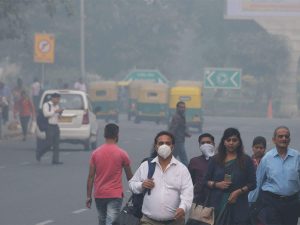Non CO2 Pollutants:

According to a new study, world needs to target both non-CO2 pollutants and CO2 pollutants to achieve climate targets.
- Global temperatures are likely to exceed 1.5 degrees Celsius over pre-industrial levels by 2035 and 2°C by 2050 if the focus is merely on decarbonisation efforts.
- The Non-CO2 Pollutants include methane, black carbon, hydrofluorocarbons (HFC), tropospheric ozone and nitrous oxide.
- Methane is a potent greenhouse gas. It contributes to the formation of ozone.
- Black carbon is a major component of PM2.5 and a potent warming agent in the atmosphere, and contributes to regional environmental disruption and accelerates glacier melting.
- Hydrofluorocarbons (HFCs) are greenhouse gases (GHGs) commonly used in refrigeration, air-conditioning (AC), building insulation, fire extinguishing systems, and aerosols.
- Tropospheric ozone is formed by the interaction of sunlight, particularly ultraviolet light, with hydrocarbons and nitrogen oxides, which are emitted by automobile tailpipes and smokestacks.
- Nitrous oxide is a greenhouse gas which is 300 times more potent than carbon dioxide (CO2). A major proportion of the N2O emissions came from the agricultural sector.
- These gases are emitted from a broad range of sectors and sources, namely:
- Methane is mostly emitted from extraction, distribution and combustion of fossil fuel, industrial processes, enteric fermentation, rice cultivation, manure management, other agricultural sources, and the waste sector.
- N2O is mostly emitted from industrial processes, agricultural soils, manure management and wastewater.
- F-gases are mostly emitted from industrial processes.
- The share of non-CO2 pollutants contributing to global warming is almost as much as carbon dioxide.
- IPCC WGI reports have shown that the contribution of CO2 and non-CO2 greenhouse gases to global heating was 52-57% and 43-48 %, respectively.




